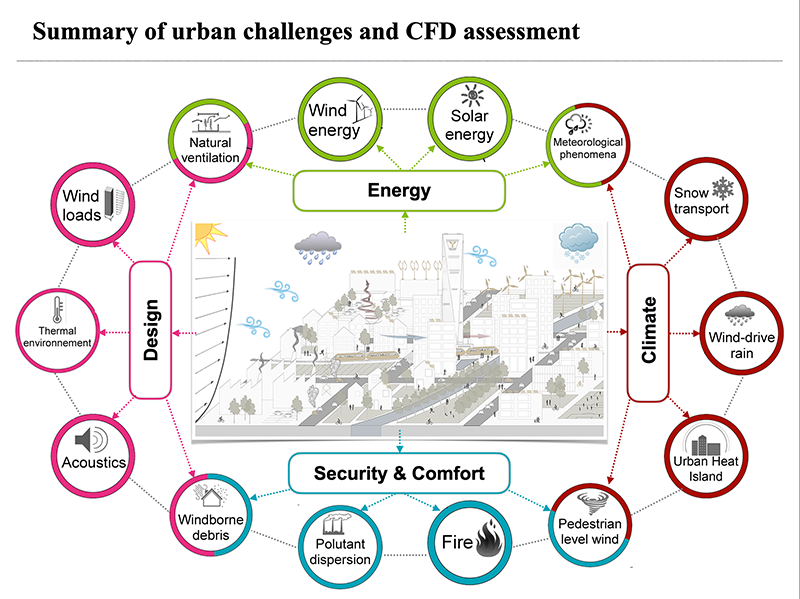Understanding and predicting turbulent airflow in complex urban environments is becoming more essential than ever to architectural and urban projects. It is particularly useful to estimate the wind loads on building structures, maximize the wind comfort and safety, forecast the dispersion of air pollutants, and optimize the harvesting of wind energy in built environments. In view of this, an accurate prediction of wind and turbulence is crucial for reinforcing the positive effects of wind flow in urban areas, while minimizing its negative impacts. At the WiRE laboratory, we are developing computational fluid dynamics (CFD) solutions to study the impact of metrological phenomena in built environments, using three main approaches: (i) The coupled multi-scale (mesoscale-urban/architecture scale) simulations; (ii) Large- eddy simulation (LES) technique; (iii) The Reynolds-averaged Navier-Stokes (RANS) technique which remains the CFD tool of choice for many urban applications, particularly those involving short-time forecasts and large-scale simulations, for which computational speed is essential.

